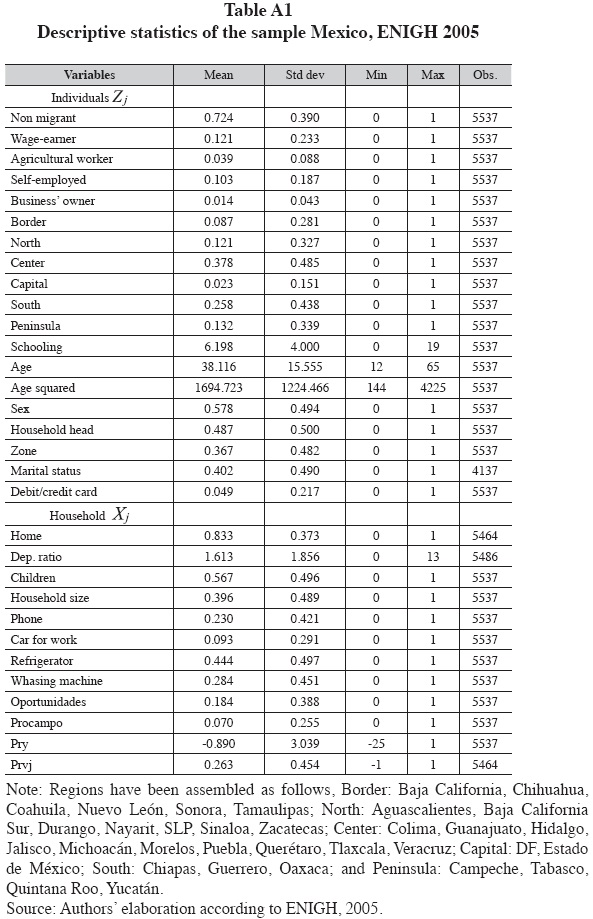
Appendix
This part shows the construction of the two variables of relative deprivation used in the empirical analysis, according to the migration condition for an individual or a household having remittances captured in the period of the survey at the third quarterly of 2005, in the Encuesta Nacional de Ingresos y Gastos de los Hogares (ENIGH). Individuals as non-migrants are those not receiving remittances with an average household income less than the standard average income in their community or region.
The first variable of deprivation is based on income (pry) defined as a ratio of the individual's income when it is compared to the regional average income from remittances. The norm cannot be the sample average of remittances for the whole data due to two reasons: 1) RD theory establishes that an individual compares his situation with his "neighbor migrant", and 2) using the average income from their own region avoids the multicollinearity problems that come about when joining it to the rest of the variables concerning deprivation in the same specification. The formula for income deprivation is

where i = 1,...,n, yi as the average incomes from non-migrants with a probabilistic restriction Pr (yi < yj) explained in the main text in equation (2); and  Rj as the average income from remittances in the region j.
Rj as the average income from remittances in the region j.
The same procedures used in order to elaborate the second deprivation variable of needs (prvj), adding a number of discrete variables codified cero/one in the data base at a household unit level hi

where hi = 1,...,5 , on behalf of the sum of five needs as compared to the regional average  ij, constructed by adding the ownership of home, phone, car for work, refrigerator and washing machine.
ij, constructed by adding the ownership of home, phone, car for work, refrigerator and washing machine.
